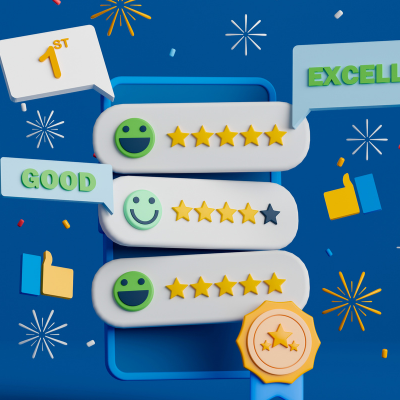As the world heals and adjusts to a new normal following peak COVID, the typical working model is also shifting, almost to the point of being in a state of flux.
Some people are desperate to return to the office, while others want working from home to become a permanent arrangement.
Recently, a seven-day week, where staff can choose to work their weekly hours whenever suits them, was trialled by Liverpool-based design consultancy Arup. 82% of employees flexed their hours, with one-third choosing to work on the weekend at least once over the three-month trial.
And in Iceland, a trial of 2,500 people by Reykjavík City Council and the government to work a four-day week was deemed an “overwhelming success”. So much so, that 86% of Iceland’s workforce have either moved to shorter hours for the same pay, or will gain the right to.
Conversely, a Microsoft study recently showed how over 40% of the global workforce is considering leaving their employer this year and 46% are planning to move, all so that they can work remotely. However, flexible remote working was again shown to be the desirable option, with 73% of workers saying they want this to continue.
Some reasons will inevitably include wanting to avoid busy commutes and spending more time with family and friends.
Meanwhile, Deloitte recently enforced a permanent remote work strategy, while Bank of America took a different approach and said that vaccinated employees are to rejoin offices as of September.
For our part here at MERJE, we’ve noticed a change in expectations when it comes to people seeking a new role, with many candidates now requesting the flexibility to work from home at least one or two days a week. It is a topic we’re exploring further, and we’re encouraging everyone to have their say in our recent LinkedIn poll which will feed in to a more in depth article in a few weeks.
This all points to how at odds the working world is after such a turbulent 18 months and the uncertainty that lies behind the final lifting of restrictions and remote workers returning to physical office spaces.
What is clear is that the pandemic has proven that we have the tools, software and skills to work productively wherever we are, but it’s also flagged the downsides of remote working. Employees can feel isolated or overlooked, their tech setup at home might not be great or their workspace could be cramped or filled with distractions.
This all begs the question, how do we strike a balance of effective, and perhaps even flexible working, in a post-COVID world?
One approach to restore the equilibrium, while remaining profitable, could be the emerging hybrid workplace, which provides an environment that combines aspects of remote working and in office working. In a typical hybrid workplace, some or all employees have the freedom to choose where and when they work, dividing their time between working from home and a central office.
A hybrid environment can operate in a number of ways; for example, it might be the case that several employees are permanently on-site or that teams work around staggered schedules, swapping in and out every couple of weeks. It might be almost entirely remote, with employees only attending for face-to-face meetings or, on the flipside, it could be almost entirely office-based, with just a few people working remotely.
The ultimate goal of a hybrid workplace is to balance the needs of individual workers with their ability to collaborate and be productive in a shared physical space.
Here, we provide tips on how to create a hybrid model for your business.
Ask your employees for their wishlist
Not all workers want the same thing and everyone has different priorities, be it wanting to work hours outside the now seemingly outdated 9-5 model, to being there for the school run.
Implementing a successful hybrid workplace should therefore encompass feedback from all employees and a survey is a good way to conduct this exercise. Take care to be realistic with people about the kinds of changes to the workplace that they might expect to see and operate an open door holiday to hear our individual concerns and requests and treat each one sympathetically.
Offer options that work for everyone
Provide employees with a choice of several ways of working that broadly should cover the majority of circumstances and eventualities. One might entail being mostly office-based, the other working almost remotely and another which sits somewhere between the two. Stipulate that when a face-to-face presence is mandatory, people do need to attend the office but try to work out a solution so that they can attend online if required.
Also allow people to change their preferences if one option is no longer working out for them, but not too often. This is because you’ll want to establish a sense of routine and normality to an extent, while being able to formulate a clear idea of where everyone will be at any given time. This, in turn, will allow you to allocate resources and budgets more effectively.
Adopt technology
The software which powered remote working during COVID is also at the heart of a well-functioning hybrid workplace. Take advantage of cloud-based productivity software and videoconferencing tools, such as Zoom and Google Meets. They can help to open up the lines of communication for regular check-ins, while creating equality between those working remotely and in the office.
Ensure that everyone has access to the tech they need to work remotely, such as WiFi and VPN. Identify any tasks which can only be completed at the office and seek out alternative solutions. In theory, an ideal hybrid workplace means that a worker should be able to do their job, even if the office environment completely disappeared.
They should also have access to any resources and information they need to be effective, so make these accessible and easy to reach; Google Docs or Dropbox are particularly useful for this. Takes notes of all agreed actions, from a meeting to an informal chat, so that everyone is on the same page.
Safeguard your company’s culture and ethos
Culture is a vital function of any business as it underpins your core values, which are then shared by all employees to reach your commercial objectives. The culture of a workplace can also manifest itself organically from interactions between workers so make sure there’s a social side for both people in the office and working remotely. Informal online get-togethers and virtual meetings can help to achieve this.
Make sure that remote colleagues feel they’re getting the complete employee experience. Perks need to benefit everyone equally, no matter where they might be based. If employees in the office enjoy unlimited coffee and snacks in the canteen, offer remote workers a free coffee subscription or meal kit.
Create remote job listings
When recruiting employees, make job ads non location specific. This means you might have to develop new remote interview and hiring processes which support applicants, no matter how far from the office they may be. You’ll also need to think about providing them with the resources they need to travel to and from the office for meetings and social events.
Don’t overlook employees
Remote workers are less visible than their office-based colleagues, meaning they’re at increased risk of being overlooked for promotions and other opportunities to climb the career ladder. Be aware of this natural bias and take steps to ensure fairness and equality across the business.
Train managers to be supportive of remote workers and adapt your recruitment processes to create an equal state of play, so that remote employees don’t find themselves professionally disadvantaged.
Carried out correctly, the core pillars of the hybrid workplace enable employees to do their utmost best, no matter where they’re located.
If you would like to discuss this, or any of the topics covered in our articles, please get in touch: info@merje.com.







